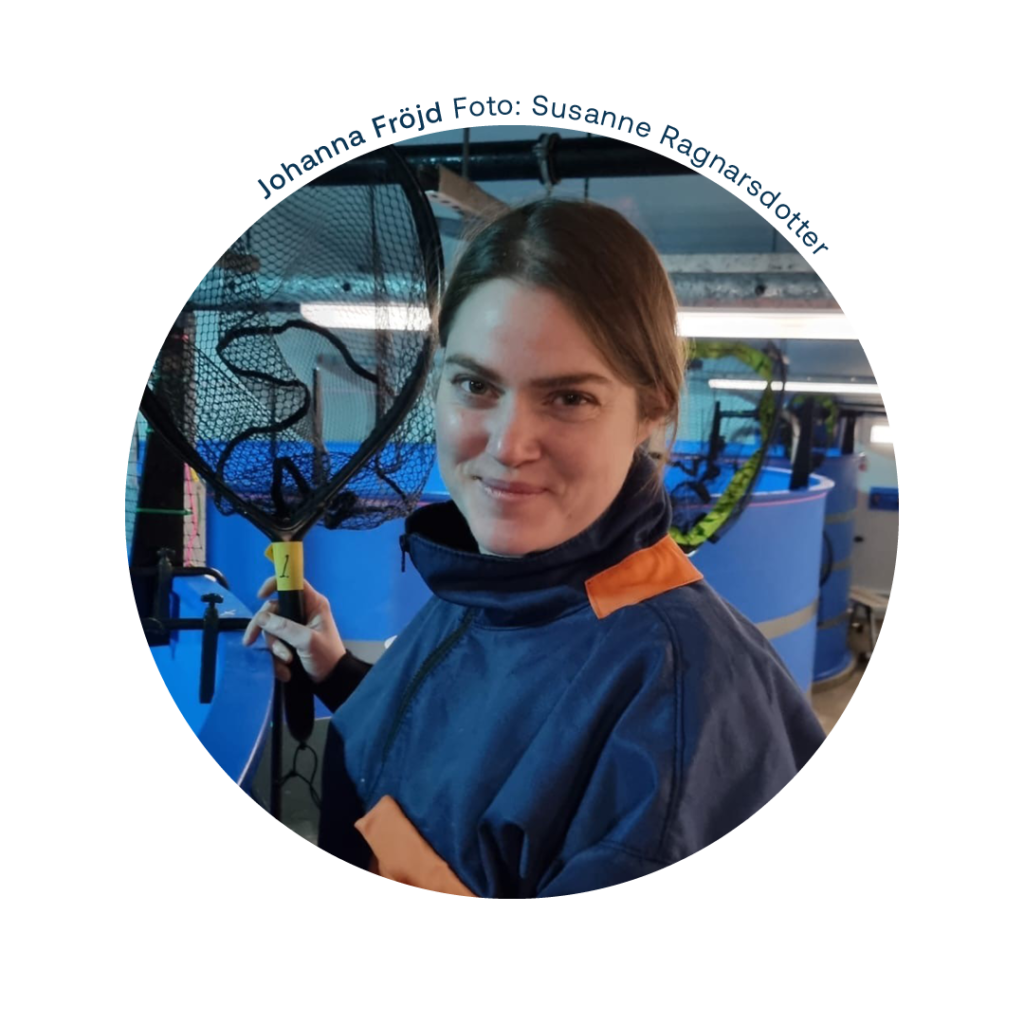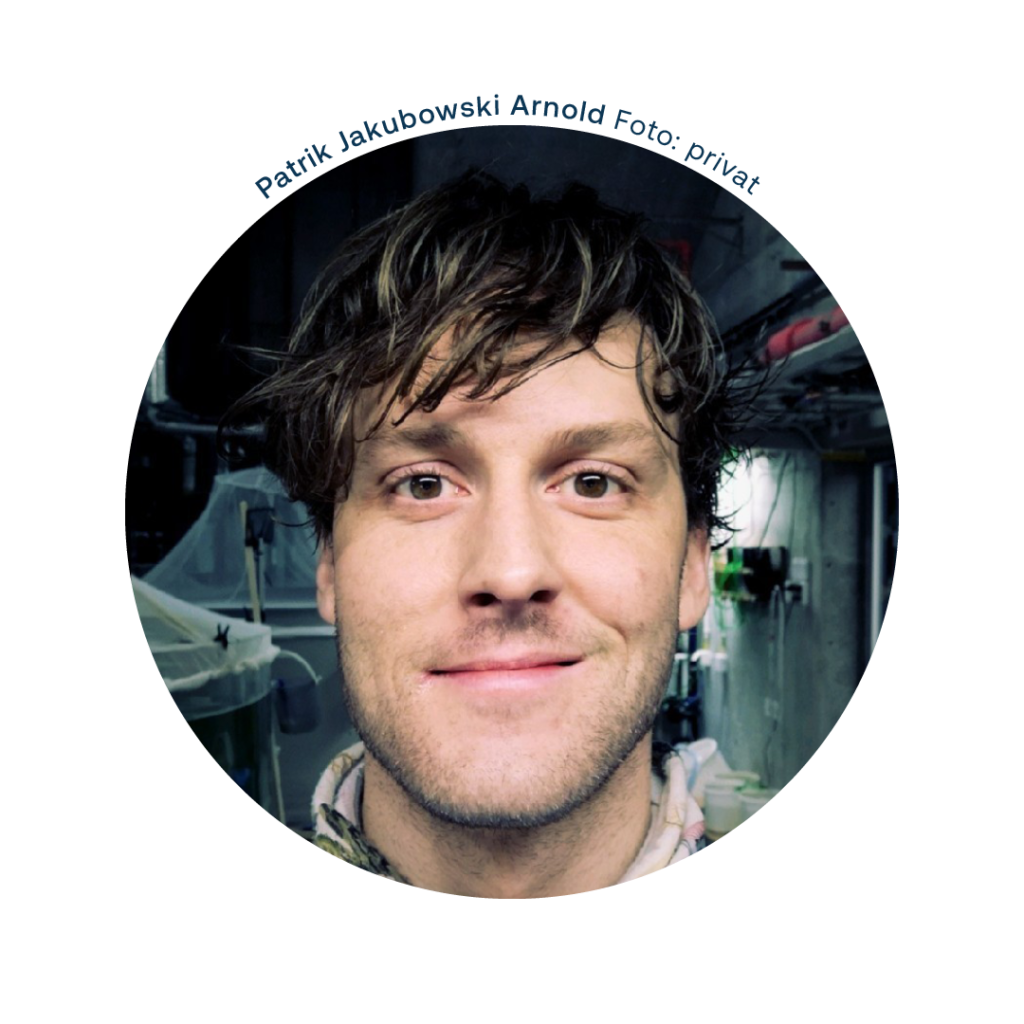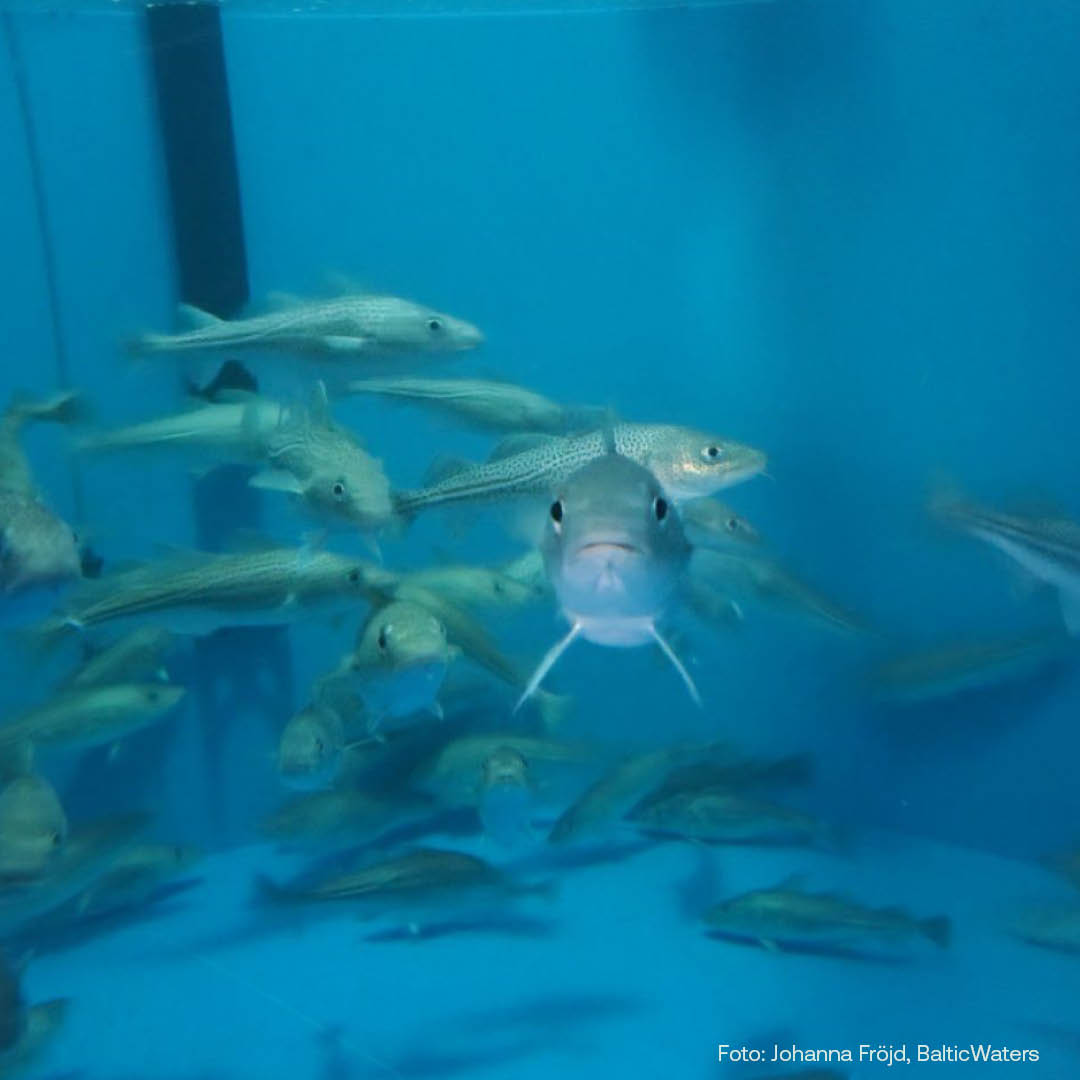From pets to food and the center of sport and recreational fishing, fish play an important role in the marine ecosystem and in our society. But unlike cows, pigs and birds, they are often treated as emotionless and unable to communicate through facial expressions or sounds. But that is now changing.
Research shows that fish are conscious and sentient individuals that react to changes in their environment. The fact that they can become stressed and feel pain is something that Johanna Fröjd, project manager for ReCod – the release of small cod in the Baltic Sea, has recognised.
“The cod recognise our routines and those of us who work with them on a daily basis. They often come swimming towards us when we look down into the pool. What stresses a newly arrived cod, such as cleaning the pool, does not stress the cod that have been at the station for a long time,” says Johanna.
Patrik Jakubowski Arnold, aquarist at Skansen’s Baltic Sea Science Center, also sees differences in behaviour between fish species, but also clear individual traits within the same species.
“We can see that individuals choose to stay on different patches in a more varied environment. In a more sterile or homogeneous environment, we can see that fish more easily show stress-like symptoms. We also see that it is possible to train our animals and that they store experiences. For example, during our dives some individuals are more interested in us and dare to approach, while others prefer to stay at a safe distance,” says Patrik.


The cod in the ReCod project are caught in the eastern Baltic Sea and live at the Ar research station on Gotland for 2-3 years before being released back into the sea. Johanna and her colleagues are very keen to ensure that the fish’s time at the station is as good as possible. It is mainly handling that stresses the fish, but the staff have learned how to manage the daily chores to minimise the impact on the cod. And if the cod are stressed, Johanna notices it straight away.
“If the stress is moderate, you can see it in the fish as they gather in shoals in a corner of the tank. Some stressed individuals may also change colour and become mottled. Very stressed individuals may start swimming vertically with their heads above water and mouths open along the edges of the tank. But thankfully, this is a rare occurrence at the research station,” says Johanna.
The aquarist Patrik can also tell when a Skansen fish is experiencing stress.
“For example, they may exhibit odd or stereotypical behaviour, they are more likely to suffer from diseases, adopt stress signs and may lose their appetite,” says Patrik.
What does a fish sound like?
Cod use sound to communicate with each other and to navigate their environment. However, underwater noise from ships and other sources can disrupt communication between fish. They may find it harder to locate each other, search for food and detect enemies. Noise as a sound pollutant and its impact on marine life has received more attention and research is ongoing.

A cod recently released back into the Baltic Sea after living at the Ar research station. Photo: Madeleine Kullenbo, Balticwaters
In the audio clip, you can hear the low-frequency, pulsating grunts of a cod, reminiscent of moose sounds. Recording by Mathias Andersson, FOI.
European Parliament calls for better fish welfare
It is becoming increasingly recognised that fish can feel pain, but less well known is that fish are not entirely unlike humans. According to physiology professor Svante Winberg, their brains work like ours and fish, like us, have different personalities. With that knowledge, it’s hard to understand why we don’t try to prevent their suffering.
A step in the right direction was taken on 18 January 2024 when the European Parliament voted to call on the Commission to introduce animal welfare requirements for fish in the next reform of the Common Fisheries Policy (CFP). The last time the CFP was reformed was in 2013 and today there is no date for the next occasion. Until then, the current rules will apply, unless individual businesses take initiative to secure better fish welfare within their own operations.
Healthy fish are profitable
Whether swimming in the sea, in the lake or in a tank, good health and welfare of fish has many benefits. In addition to the well-being of the fish themselves, their improved well-being can translate into profitability for fisheries, businesses and research. For long-term sustainable fisheries, healthy and viable stocks are one of several prerequisites. In aquaculture, both fish and companies benefit from the well-being of animals as it increases resistance to both stress and disease. The same is true in research.
In the ReCod project, happy and healthy fish are a prerequisite for both successful research and a successful project.
“If the cod are stressed, they risk not spawning at all. In addition, sperm and egg quality can be negatively affected, which can affect research on Baltic cod reproduction, and therefore the project as a whole. So for us, it is absolutely essential to minimise stress on the fish to ensure that we get high quality fertilised eggs that then hatch into healthy little larvae,”says Johanna.
The fact that the European Parliament is now calling on the European Commission to introduce animal welfare requirements for fish in the CFP is timely in Johanna’s view, not because the current lack of regulations has prevented her from taking care of the fish from the start.

About ReCod
The project is carried out at the research station Ar on Gotland – in the middle of the Baltic Sea. The goal of ReCod is to conduct experiments with the release of 4–6-day-old cod larvae at several locations along the east coast to investigate whether the larvae survive and successfully establish themselves. If the experiments are successful, there is the possibility of reintroducing cod in the Baltic Sea at more locations, thereby increasing the chances of preserving and protecting the unique eastern stock. ReCod is implemented and financed by BalticWaters and Uppsala University.
Would you like to know more? Visit the project’s website.

